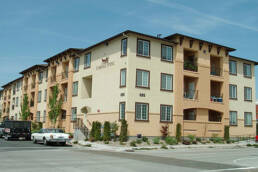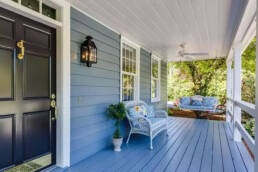If you’re considering your future living arrangements, take a look at Buying a Home to Age-In-Place: A Guide by SeniorHomes.com to kickstart your planning.
The guide walks you through some of the big question marks about where to age, your ideal future community, age-friendly amenities to search for, and options for future care needs.
Here are eight topics to consider when vetting a prospective community for retirement.
- Walkability – Is the neighborhood walkable, well-lit, and safe for exercising and running errands? Are the sidewalks wide, level, and uncracked with an easy grade throughout the area to encourage walking?
- Public safety – Is the neighborhood safe, meaning would you feel comfortable being out at night?
- Public transportation – Does the area offer easy-to-access public transportation? Safe public transportation is critical if driving becomes more difficult.
- Accessible amenities – How close is the nearest grocery store, pharmacy, bank, restaurant, and other businesses you’ll need? Essential services within easy walking distance support continued independence.
- Healthcare – What are the closest hospitals and healthcare facilities? Are they high quality? Good medical care is essential to ensure health and well-being as you age.
- Support services – What options exist for services like Meals on Wheels, home health care, adult day care, and other caregiving support?
- Social amenities – Will you have access to senior organizations, volunteer opportunities, and various social activities? Social opportunities are crucial for cognitive, mental, and physical health, so cultural, religious, and entertainment venues should be nearby.
- Airport accessibility – Is the neighborhood close to family and friends? Is there a nearby airport to make visiting out-of-town family and friends easy and vice versa?
The guide also includes resources—professionals who can help you buy a home, for example—and a simple aging-in-place checklist to vet potential properties. That checklist is useful to assess your current house and identify necessary age-friendly upgrades—accessible entrances, hallways, doorways, bathrooms, and kitchen—you’d need to make to continue living there.
Also, see the AARP Livability Index, another helpful resource for researching retirement destinations.






















































